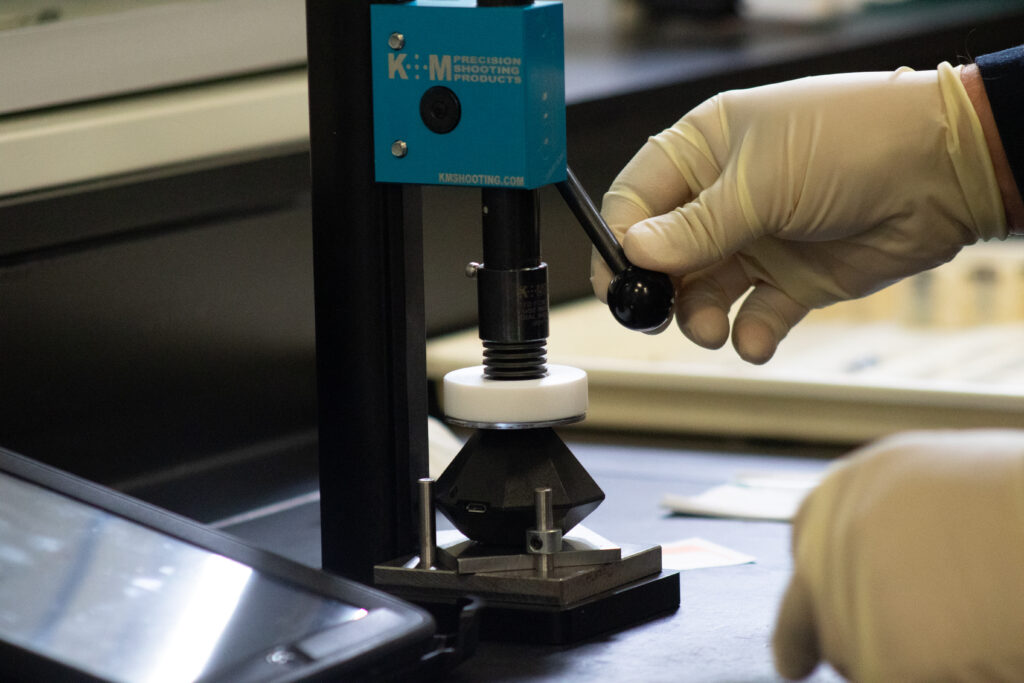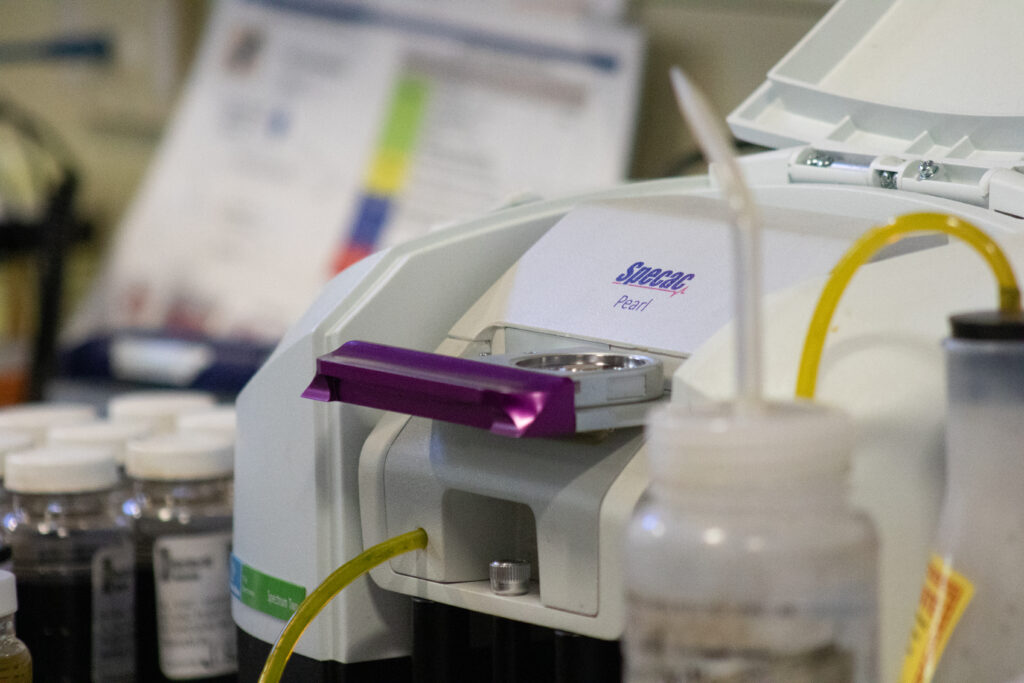
Currently, most robotic operators undertake this task based on a manufacturer’s recommended schedule, regardless of whether the grease needs to be changed or not. Often, this means that healthy grease is removed from the robot prematurely, adding unnecessary labor and product costs. This means that there must be a more efficient means of performing a robotic grease analysis.
MRG’s Robotic Grease Analysis Test Slate shows operators the condition of the grease without requiring a full grease change. This allows operators to delay hotly and unnecessary grease changes until the conditions demand it. Further, analysis provides early warning of abnormal conditions in the robot. In this way, catastrophic failures and extended downtime can be avoided, further reducing operating and maintenance costs. The test slate for robotics is designed to evaluate wear, consistency, contamination and oxidation conditions of FANUC drive greases. Everything included in the basic test slate can be found below.
ROBOTIC GREASE ANALYSIS TEST SLATE

Colorimetry
This testing, part of the robotic grease analysis test slate, is used to validate observed appearance changes in grease, trend darkening due to aging or overheating, characterize dye formulations of new greases, and may even approximate the concentration of particulate contaminants accumulating in the grease.
A thin film of grease sample is loaded into a dark chamber and exposed to the spectrum of visible light (440-700nm). The relative intensity of the light that is absorbed at each wavelength is measured and an absorption spectrum graph is generated. The visible spectrum is a characteristic of grease color and can be used to indicate grease color changes that are not quantifiable by the human eye.


FT-IR Spectroscopy (Optional)
FT-IR is used to determine the chemical properties of a compound in a qualitative manner. Oxidation products, contamination and mixing with incompatible greases are easily detected using this technique.
A small quantity of grease is subjected to a spectrum of infrared radiation. Specific wavelengths of infrared radiation excite the chemical bonds that make up the grease and generate a unique spectral fingerprint. This can then be compared to baseline data to determine chemical changes in grease composition.
Ferrous Debris Monitoring (FdM+)
Ferrous Debris Monitoring is used to quantify the ferrous content of used grease samples. It is a primary indicator of wear levels.
The FdM+ uses an electromagnetic coil to measure iron content. The sensor detects the ferrous debris distributed throughout the entire sample as the Grease Thief is dropped into the instrument. This helps avoid inaccurate results due to aliquoting the sample or instrumental particle size limitation, which are the two major issues that can arise when using other methods to track wear levels. Results are reported in parts per million (ppm).
Further testing for robotic grease analysis can be suggested upon completion of these basic screening tests including R.U.L.E.R., Analytical Ferrography, RDE Spectroscopy, Karl Fischer Moisture and Rheometry.
Click here to see our Grease Analysis page for more information.
